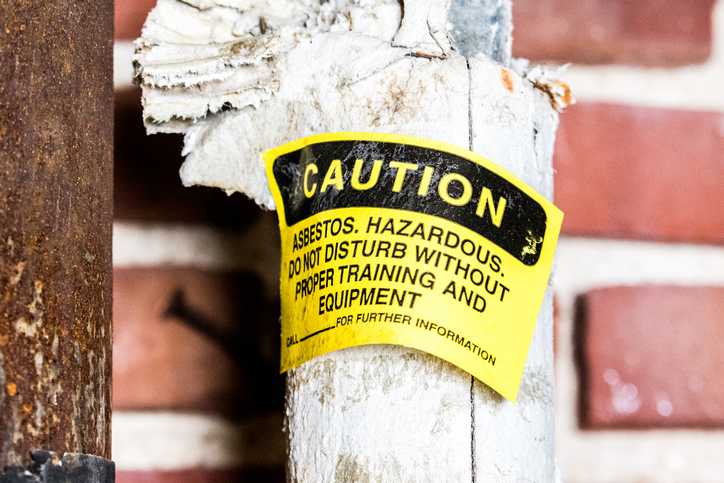Asbestos, a once-popular building material due to its fire resistance and durability, is now recognized for its serious health risks. In New York City, where older buildings abound, asbestos abatement is a critical service to ensure the safety of residents and workers. This blog delves into the intricacies of asbestos abatement, the benefits of professional services, and the importance of hiring licensed contractors. We’ll also highlight notable case studies from NYC to illustrate the impact of effective abatement.
What is Asbestos Abatement?
Asbestos abatement is the process of removing, containing, or encapsulating asbestos-containing materials (ACMs) to prevent exposure and health hazards. The procedure is complex and requires adherence to strict safety protocols to protect both the environment and human health.
Key Components of Asbestos Abatement:
Inspection and Assessment:
- Identify and inspect areas with suspected asbestos.
- Conduct sampling and laboratory analysis to confirm asbestos presence.
Planning and Preparation:
- Develop an abatement plan following local and federal regulations.
- Establish containment areas to prevent asbestos fiber dispersion.
Removal or Encapsulation:
- Removal: Physically extract asbestos-containing materials.
- Encapsulation: Apply a sealant to prevent fibers from becoming airborne.
Decontamination:
- Clean the work area using specialized equipment.
- Ensure proper disposal of asbestos waste according to regulatory guidelines.
Air Monitoring:
- Conduct air tests to confirm that asbestos fibers are below hazardous levels.
- Use HEPA (High-Efficiency Particulate Air) filters to ensure clean air post-abatement.
Final Inspection and Clearance:
- Perform a thorough inspection to verify the area is safe for reoccupation.
- Provide a clearance certificate upon successful completion.
Benefits of Professional Asbestos Abatement Services
Engaging professional asbestos abatement services offers several key advantages:
Health and Safety:
- Reduced Risk: Professionals ensure that asbestos fibers are managed safely, reducing health risks associated with exposure.
- Compliance: Adherence to safety standards and regulations protects both workers and building occupants.
Expertise and Experience:
- Qualified Technicians: Licensed abatement contractors have specialized training and experience in handling asbestos.
- Advanced Equipment: Use of state-of-the-art tools and protective gear ensures effective abatement and minimizes risks.
Regulatory Compliance:
- Legal Requirements: Abatement services comply with local, state, and federal regulations, including OSHA and EPA standards.
- Documentation: Proper documentation and certification are provided, ensuring legal and regulatory compliance.
Cost-Effectiveness:
- Long-Term Savings: Preventing asbestos-related health issues can lead to significant cost savings in medical expenses and potential legal liabilities.
- Efficient Process: Professionals manage the abatement process efficiently, reducing the risk of costly errors or delays.
Case Studies: Asbestos Abatement in NYC
Several notable abatement projects in New York City highlight the importance and effectiveness of professional asbestos removal:
Case Study 1: The World Trade Center Site
- Context: Following the September 11 attacks, the cleanup of the World Trade Center site involved significant asbestos abatement efforts.
- Details: The extensive demolition and debris required thorough removal of asbestos-containing materials to ensure worker safety and environmental protection.
- Outcome: Successful abatement contributed to the safe and timely rebuilding of the site, demonstrating the critical role of professional services in large-scale projects.
Case Study 2: The Brooklyn Navy Yard
- Context: The Brooklyn Navy Yard, a historic industrial site, underwent redevelopment involving asbestos abatement to convert it into a modern business hub.
- Details: The project involved the removal and encapsulation of asbestos in various structures to meet current safety standards.
- Outcome: The redevelopment was completed successfully, with the abatement process ensuring a safe environment for future tenants and workers.
Case Study 3: The New York City Housing Authority (NYCHA)
- Context: NYCHA has undertaken multiple asbestos abatement projects across its aging housing developments to address safety concerns.
- Details: These projects involved comprehensive assessments, removal, and containment efforts to ensure tenant safety.
- Outcome: The initiatives improved living conditions and compliance with health and safety regulations, showcasing the importance of ongoing abatement efforts in public housing.
The Importance of Hiring Licensed Abatement Contractors
Hiring a licensed abatement contractor is crucial for several reasons:
Expert Knowledge:
- Training: Licensed contractors have completed rigorous training programs and certification processes.
- Regulatory Knowledge: They are well-versed in local, state, and federal regulations governing asbestos abatement.
Safety Assurance:
- Proper Handling: Licensed professionals follow stringent safety protocols to handle asbestos safely.
- Risk Mitigation: They use appropriate personal protective equipment (PPE) and containment methods to prevent exposure.
Legal and Ethical Standards:
- Compliance: Licensed contractors adhere to legal requirements, avoiding potential fines and legal issues.
- Reputation: They maintain high standards of practice, ensuring reliable and effective service.
Asbestos abatement is a critical process that requires expertise, precision, and adherence to safety regulations. In New York City, professional abatement services offer numerous benefits, including health protection, regulatory compliance, and cost-effectiveness. By examining notable case studies and understanding the technical details of abatement, it’s clear that hiring licensed contractors is essential for ensuring a safe and successful removal process. If you suspect asbestos in your property, seeking professional help is the best way to safeguard your health and comply with necessary regulations.
